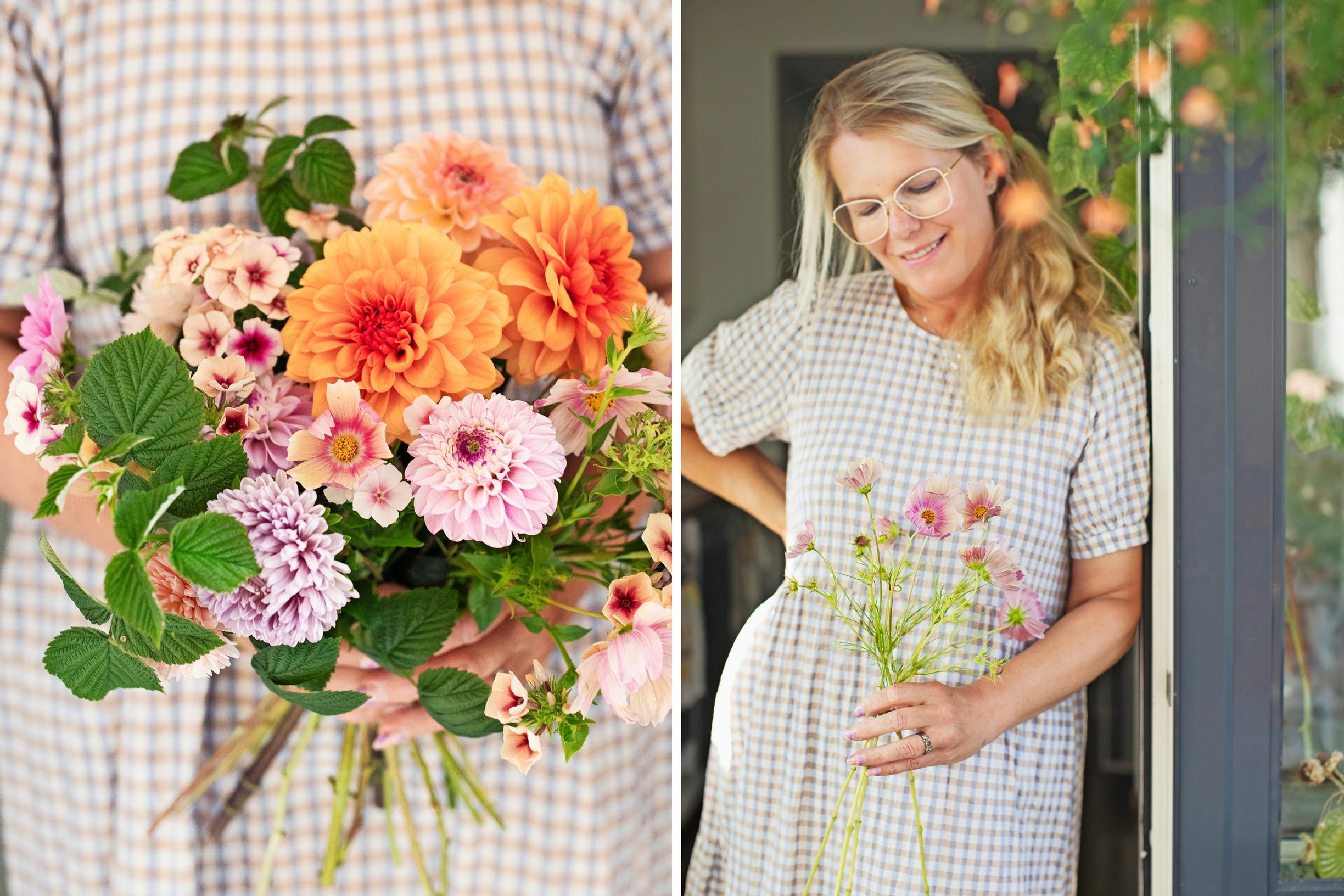
Furloughed flight attendant Jenni decided to study floristry—now her plot is a sea of blooms with plenty left to sell
Jenni Amberg-Kairamo applied to florist school because she wanted to learn how to keep flowers alive. That led her to start growing them as well. Flowers don’t mature overnight—you have to be patient. But the reward is nothing short of stunning!
Jenni Amberg-Kairamo has spent the past twelve years flying for work from country to country and city to city. As a flight attendant, her workdays follow set routines, leaving no room for wandering.
When Jenni is not flying, she embraces her other side. She loves working with her hands and feeling connected to nature. Although she now lives in Helsinki, Jenni grew up in the countryside, where her childhood home was full of animals. Her parents bred trotters in Sääksmäki. When the pandemic began, Jenni—like many others in the travel industry—was furloughed, but the new situation also held possibility. She wanted to learn something new, creative and visual, to balance her job. Calligraphy and cut flowers intrigued her.
Jenni, how did you become a calligrapher and a florist?
First, I enrolled in Aini Mäensivu’s Kalligrafiastudio’s modern calligraphy course. During the course you learn the basics needed for lettering, and proper pen technique is the most important of them all. After that the style is entirely free, and everyone can develop their own hand. I found that far more appealing than traditional calligraphy, which comes with a lot of rules and restrictions.
When the furloughs continued, I thought it would be nice to do something with living material as well. So I applied to a florist program.
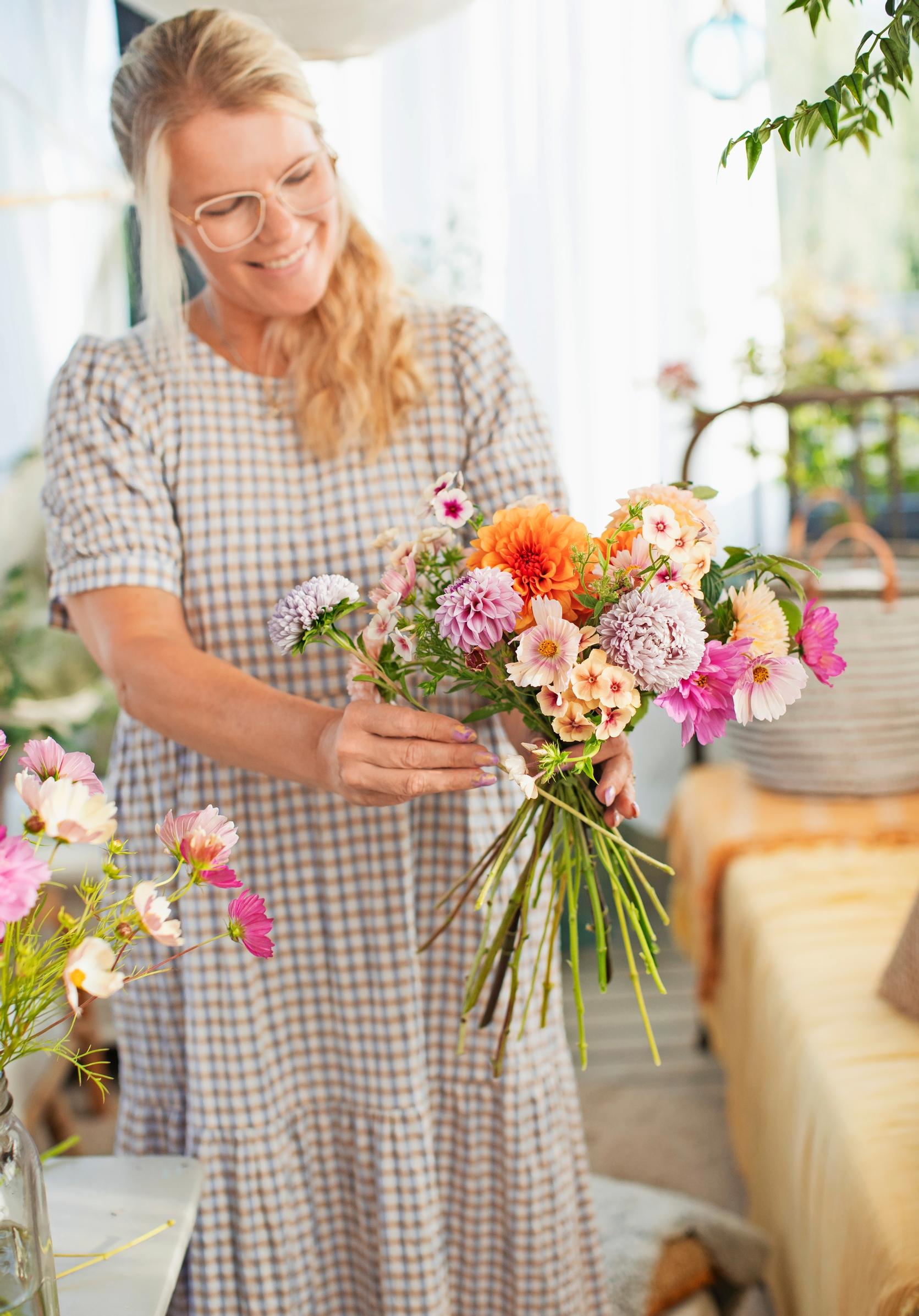
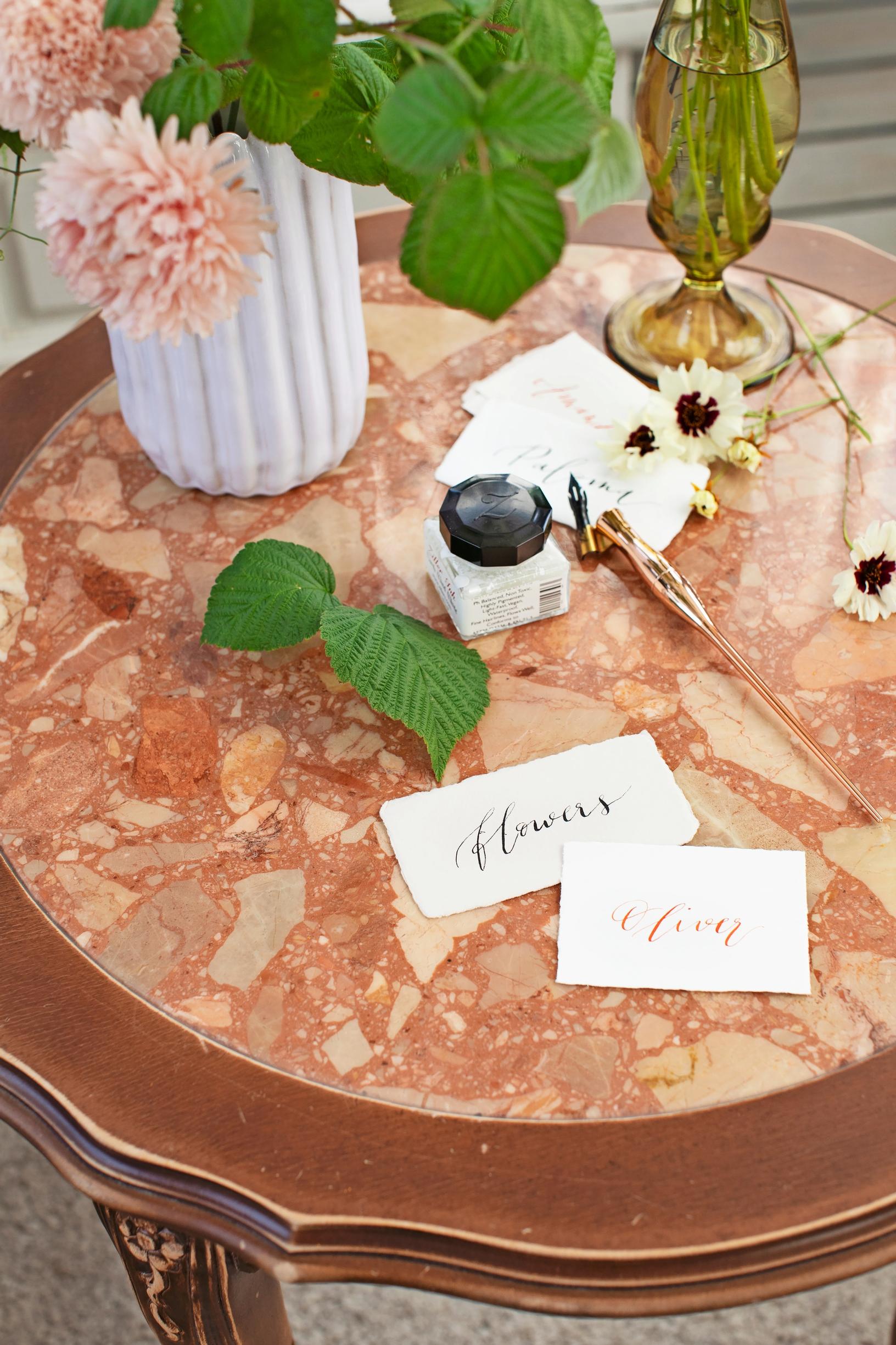
Have you always been good with plants?
I’ve always loved flowers and plants, but I never considered myself a real green thumb. I applied to florist school because I wanted to learn how to handle flowers—and keep them alive! Instead of traditional floristry, I was drawn to a natural, meadow-inspired style of arranging.
I did my internship in a flower shop, and one day they had ordered a couple of buckets of Finnish cut flowers. When I saw them, I was speechless. The colors and shapes of Finnish-grown cut flowers were nothing like what I was used to at the shop. I took some home and stared at them all evening—I had never seen anything like it.
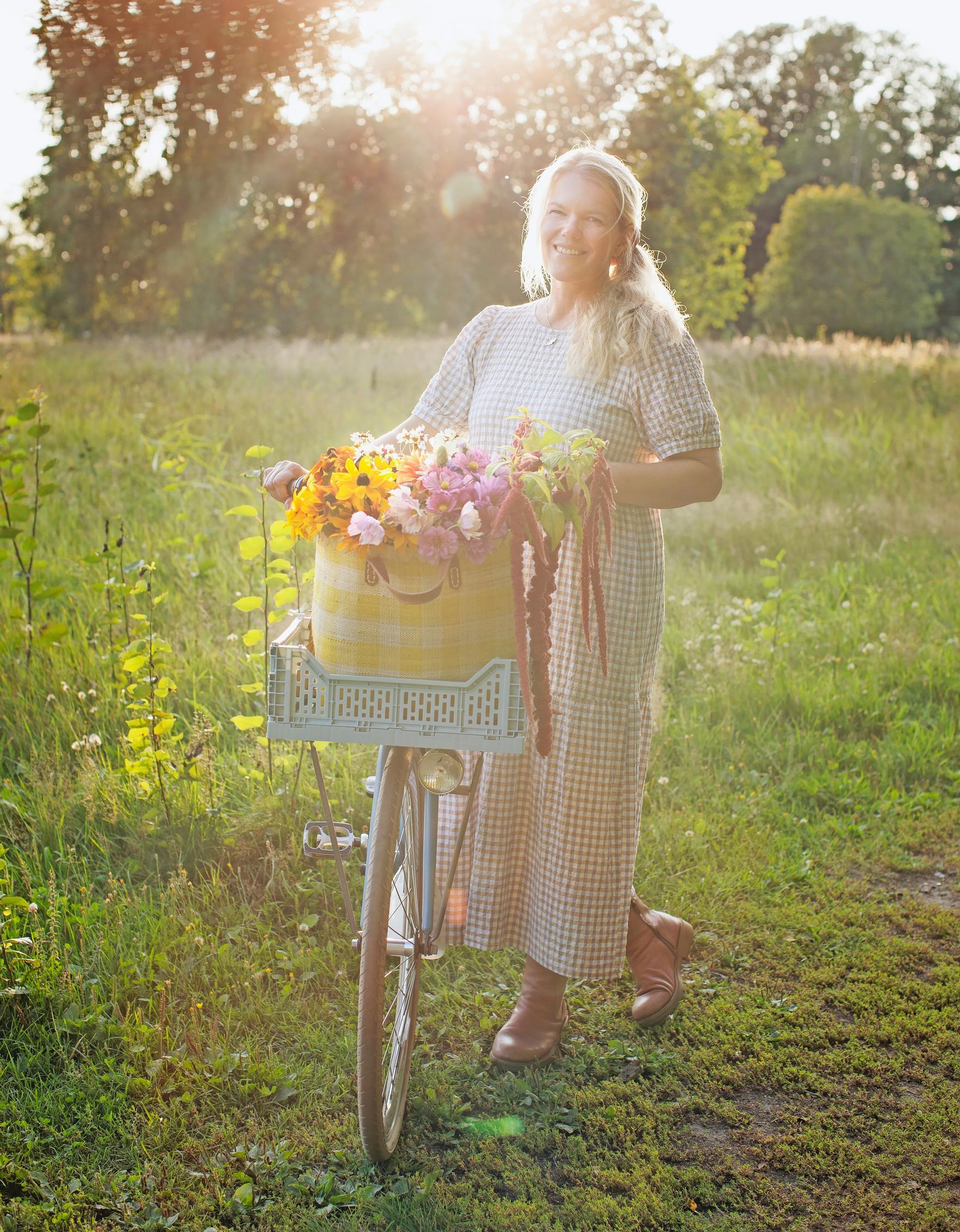
“I start my cut flowers from seed at home in the spring. It’s quite a production in a city apartment when the living room fills with little pots, but an early harvest makes all the effort worthwhile.”
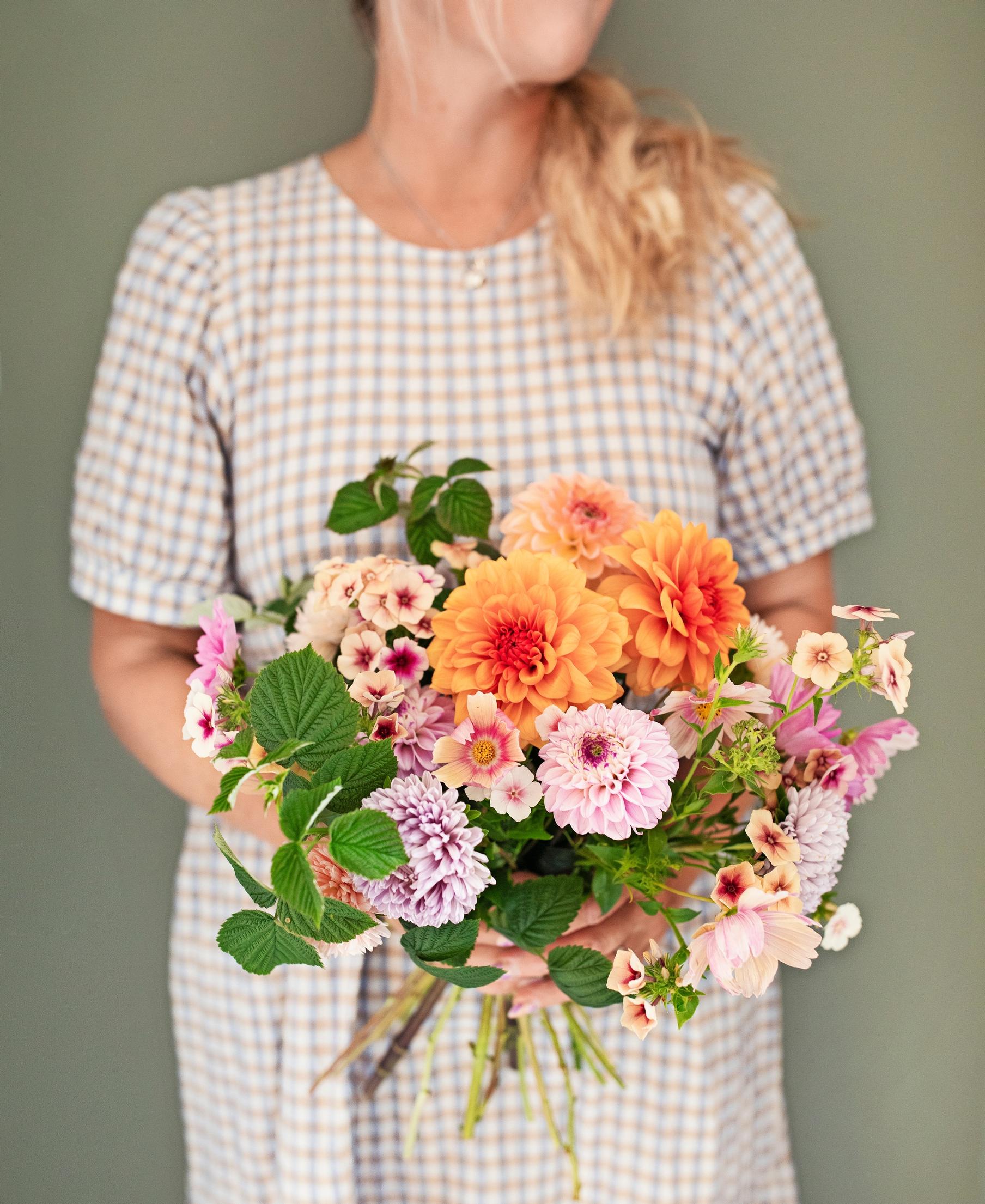
You started growing cut flowers on a garden plot. How did it all begin?
I began by asking my gardener friends for tips and started planting on a one-are plot (about 100 square meters) that belongs to a friend. That first summer I grew two raised beds of dahlias and zinnias. Later I was given the entire space.
I visit the plot whenever my work schedule allows. Spring is the busiest time, when tiny seedlings need to be watered constantly. By midsummer the flowers can fend for themselves longer, especially if it rains. I start the cut-flower seedlings at home in the spring. It’s quite a circus in an apartment building when the living room fills with little pots, but an early harvest makes the effort worthwhile.
Zinnias, asters, and strawflowers are easy to grow. Last summer I had a long work trip in spring, and many of the sweet pea seedlings I’d started died. I sowed a new batch directly outdoors, but because of limited space the plants stayed weaker than before. Cosmos has done well for me, although once I ended up with a whole stretch of nothing but green leaves—I’d apparently given that bed too much fertilizer. Later I remembered that cosmos doesn’t like that.
Last summer I tried growing strawflowers for the first time, and I’m thrilled with them. They don’t need much water or fertilizer, and they keep producing new blooms after you cut the stems.
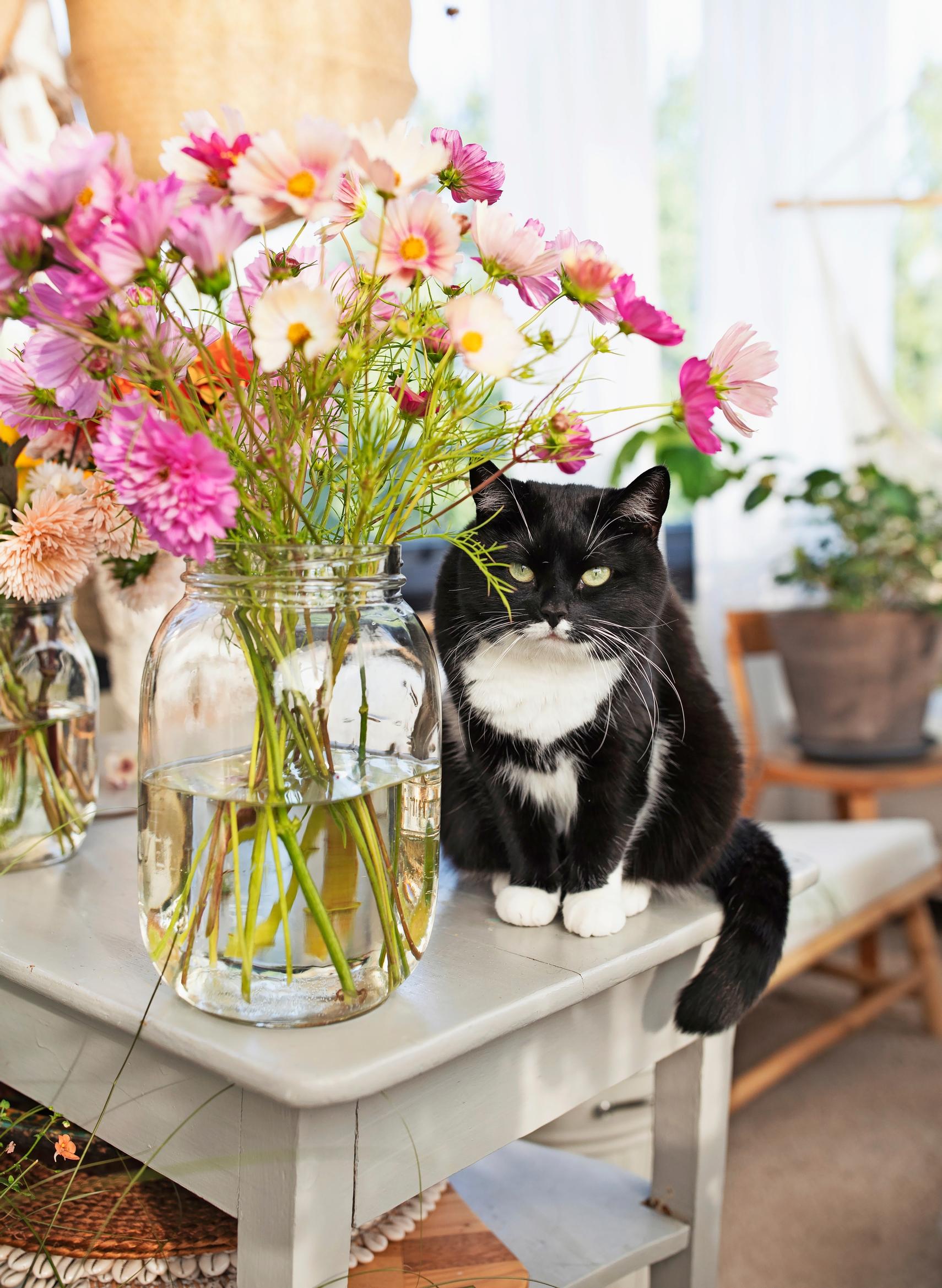
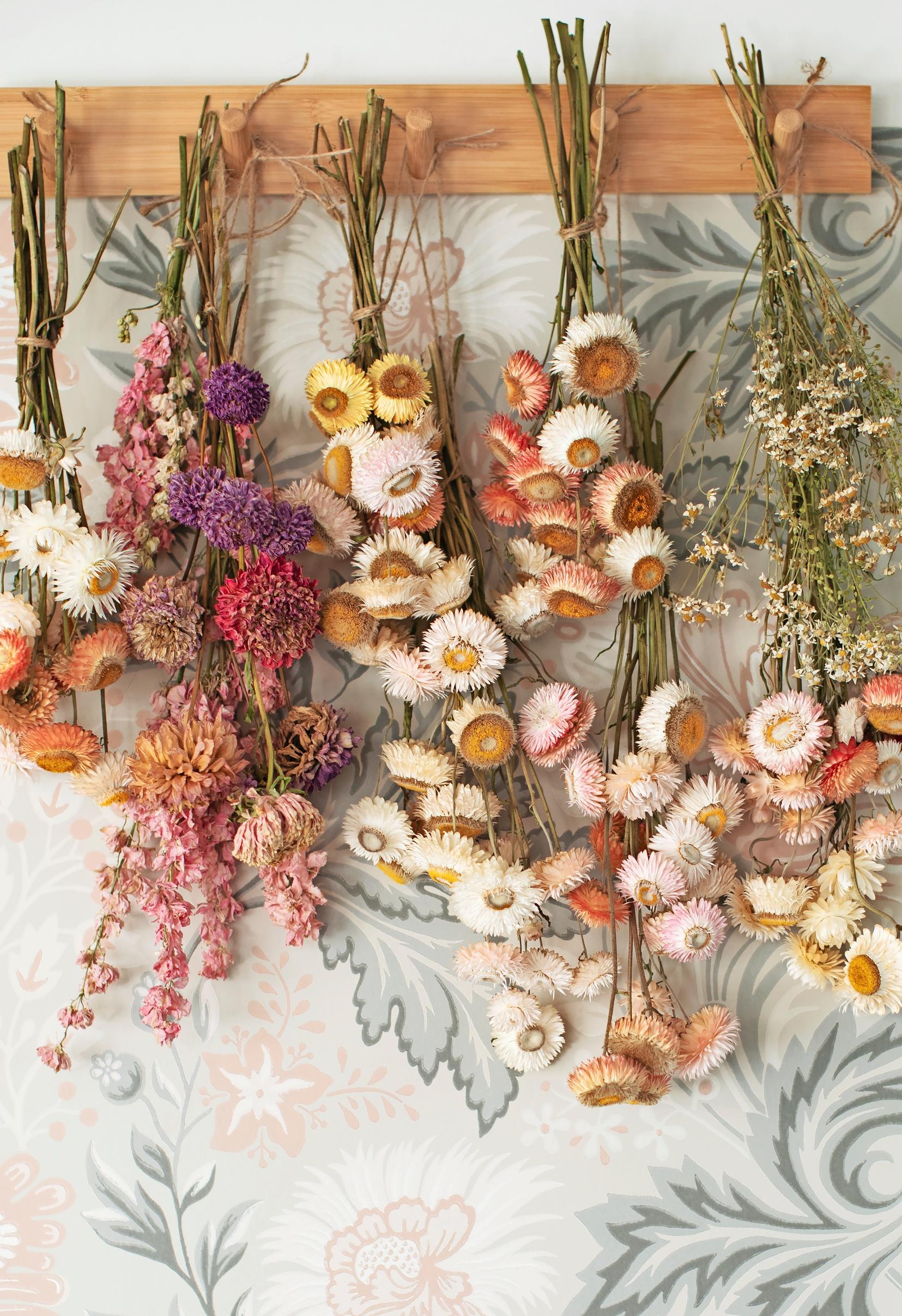
In addition to working as a flight attendant, you’re a freelance florist. What do flowers give you?
By nature I’m very fast-paced, but flowers have made me more patient. They don’t grow overnight—you have to slow down and wait. In that sense it’s like raising children. I feel my kids have taught me more than I’ve taught them.
Working with flowers is therapeutic and calms my mind. I believe it’s because you’re handling living material and connecting with nature.
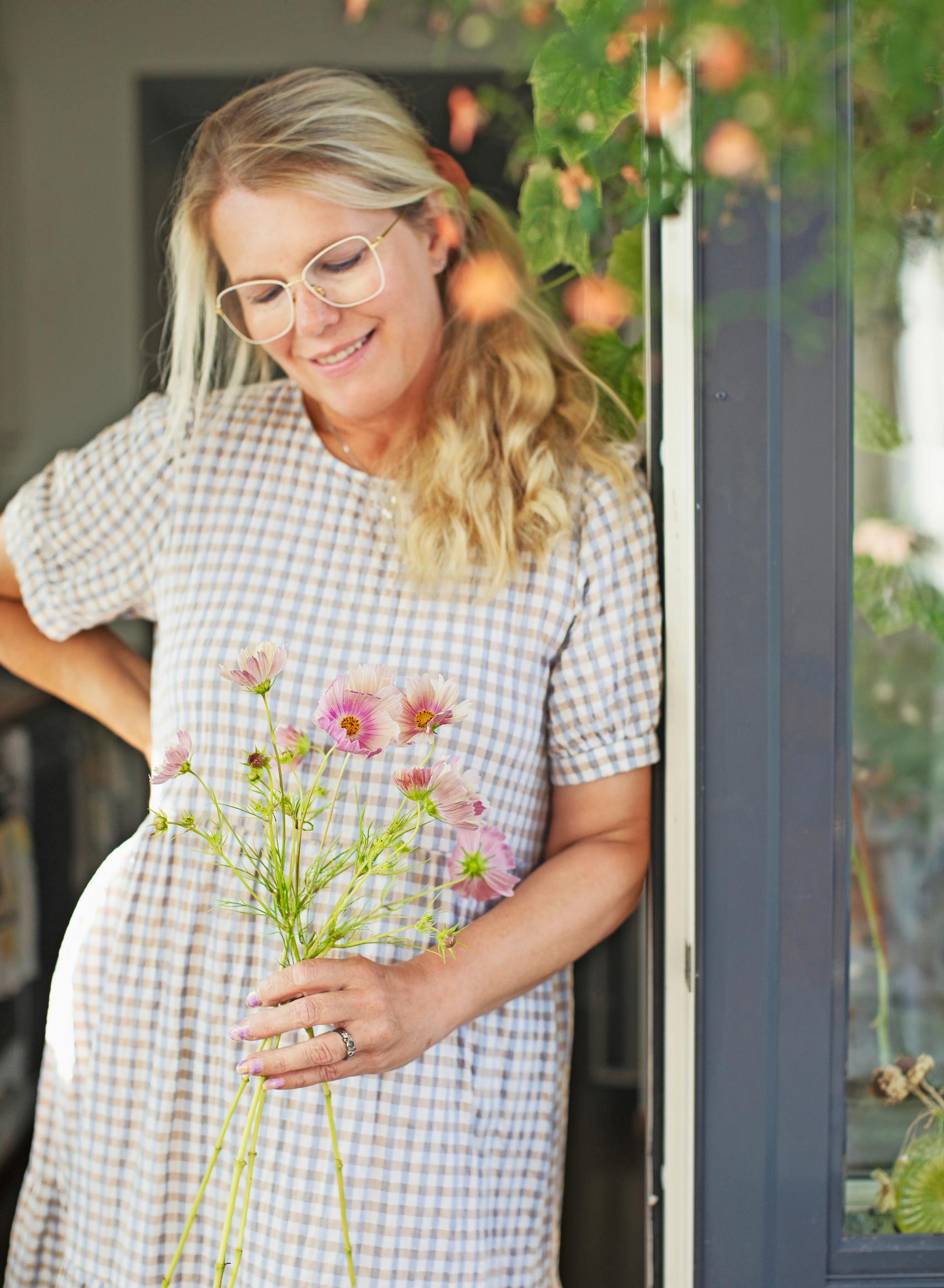
“Flowers don’t grow overnight—you have to be patient. In that sense it’s like raising children. I feel my kids have raised me more than I have them.”
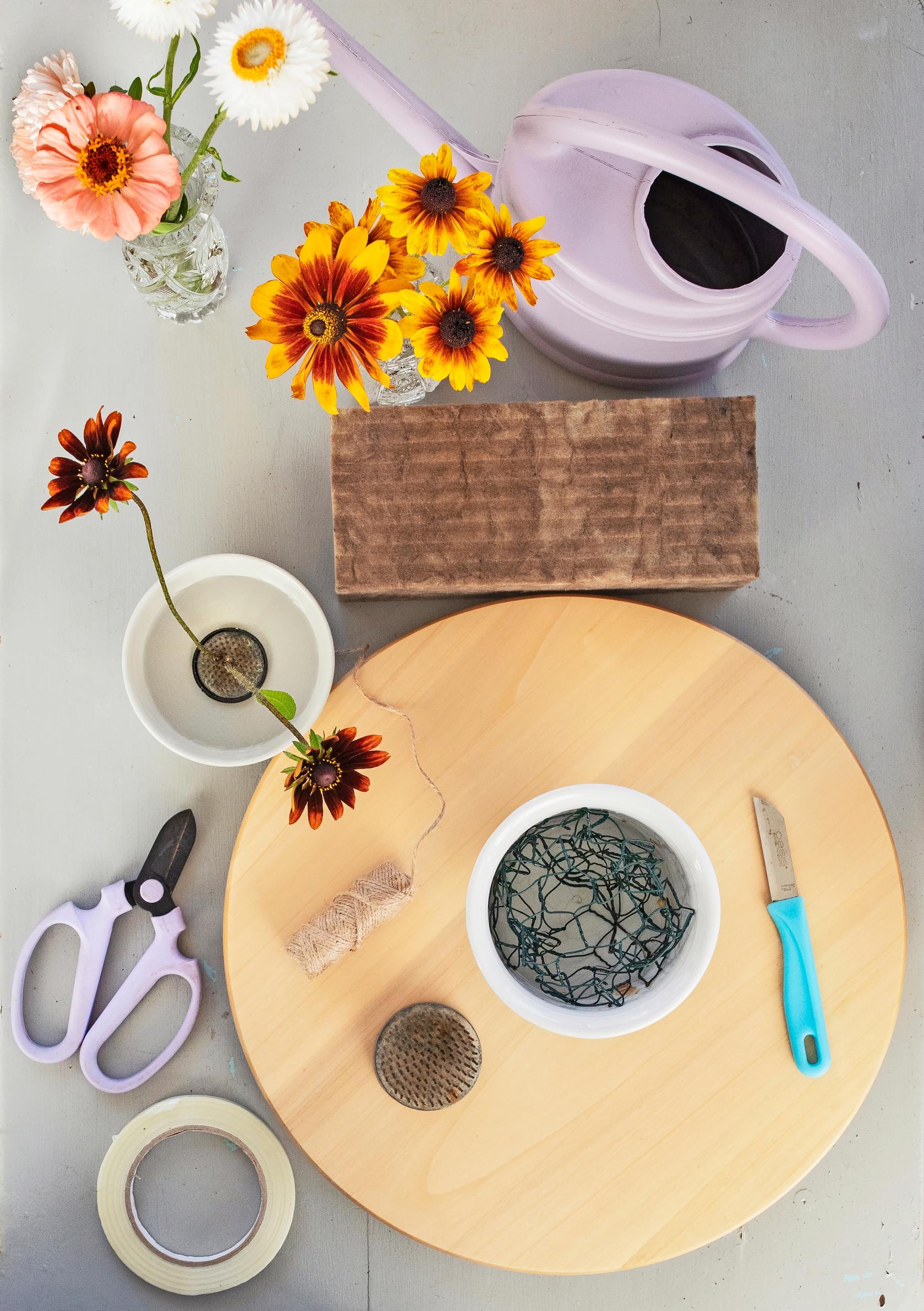
Your bouquets look lovely! What tips can you share for arranging flowers?
A meadow-style bouquet comes from using varieties that look like wildflowers and arranging them loosely. If you want light, airy arrangements, use flower frogs of different sizes. You can also slip a chicken-wire sphere into a vase as support and tape it to the rim if needed.
Agra-Wool is an eco-friendly alternative to floral foam. It’s now widely available. It holds water better than foam and can be reused many times.
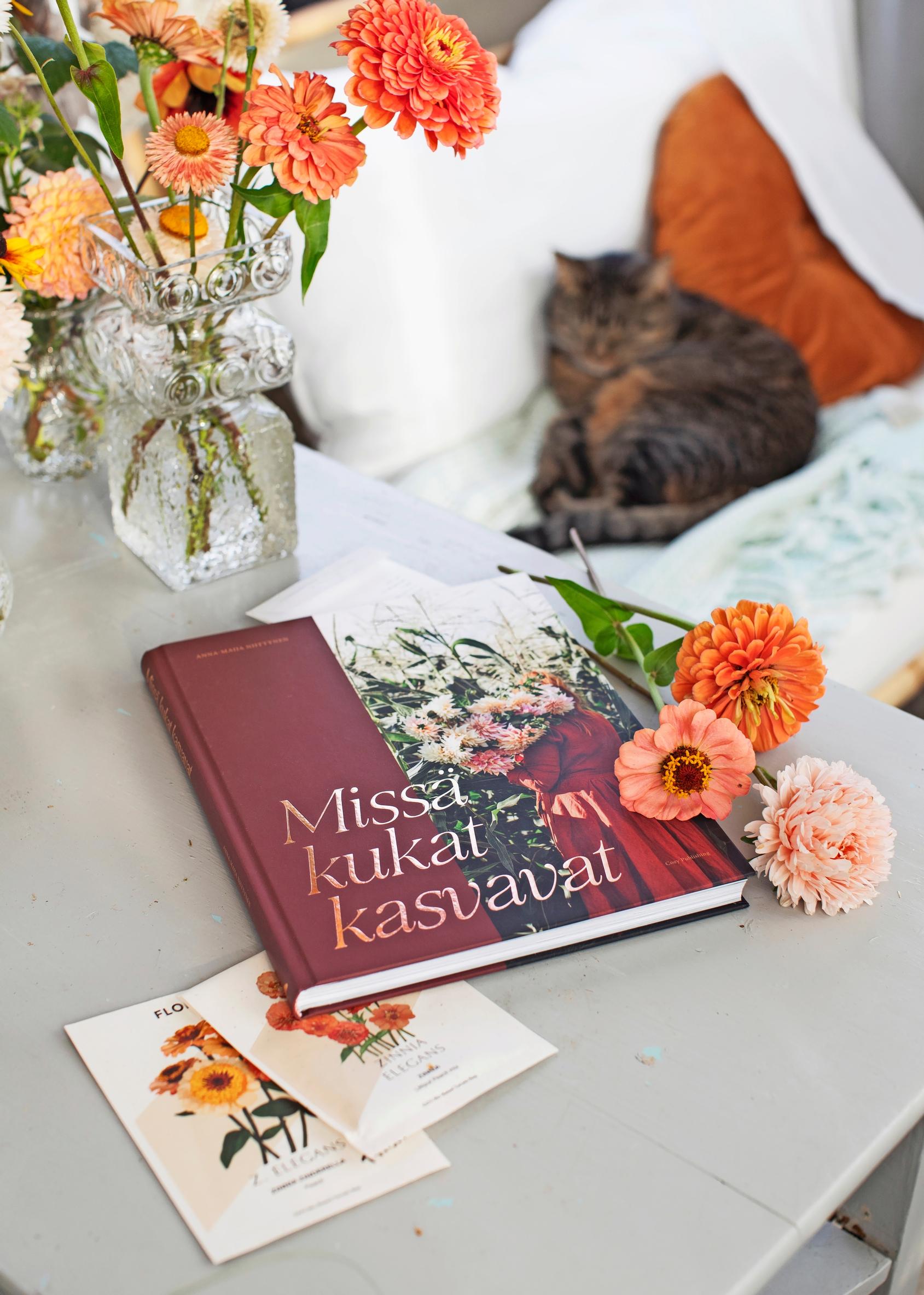
Jenni’s tips for a spiral bouquet
- Cut a fresh, angled surface on the stem with sharp scissors or a knife. Remove excess leaves so the flower lasts longer in the vase.
- Start with greenery to create a base. Add flower stems fan-like and at an angle over the previous ones so the blooms face your left shoulder.
- Gently twirl the bouquet between your index finger and thumb. It gets easier as the bouquet grows.


